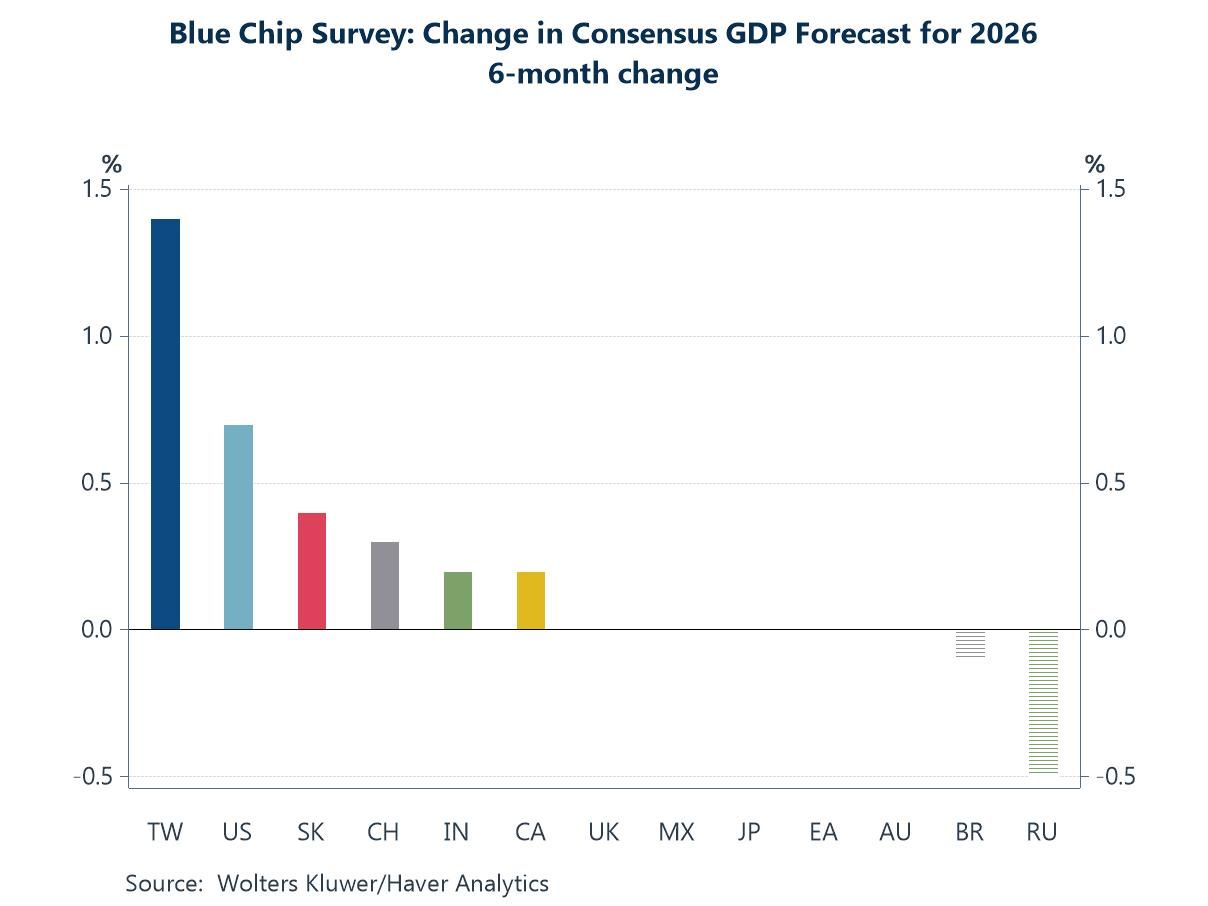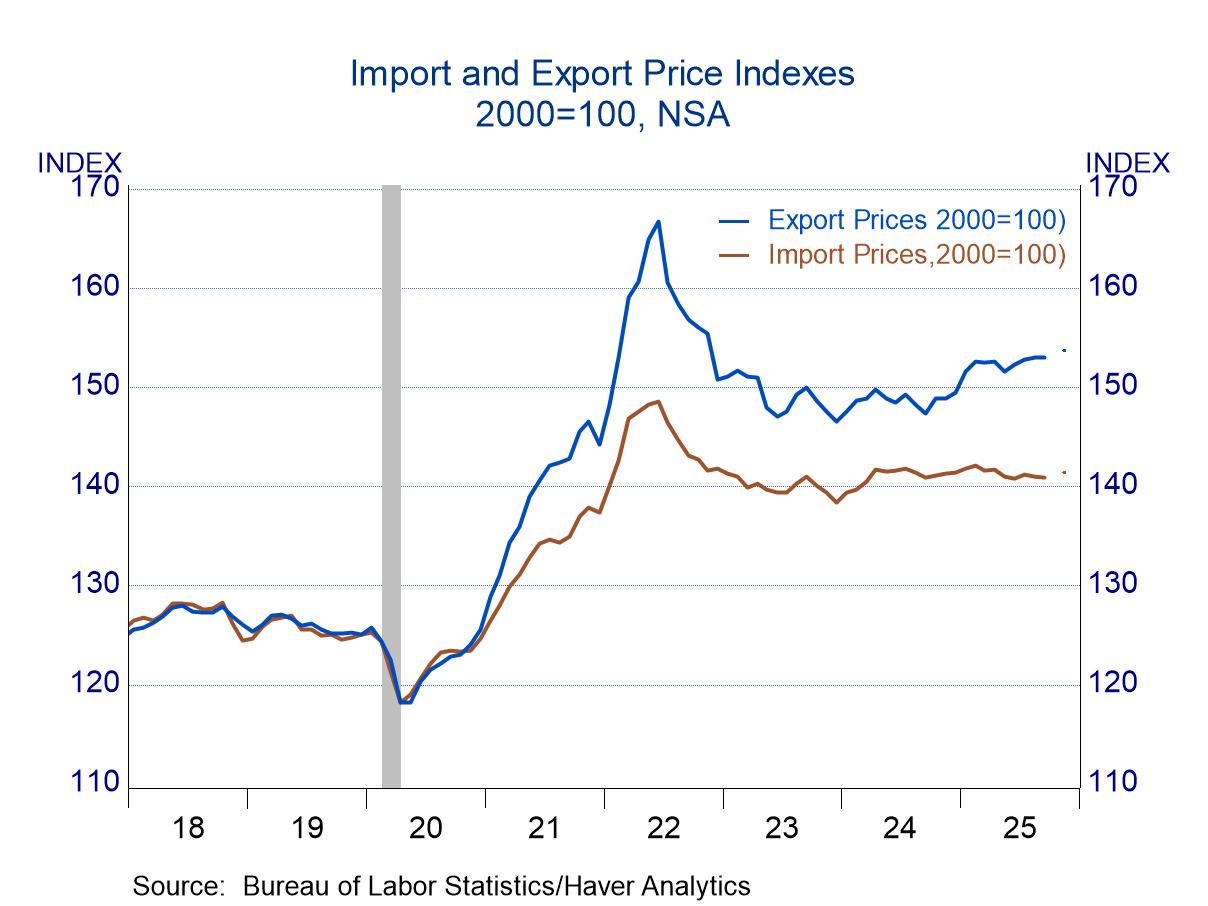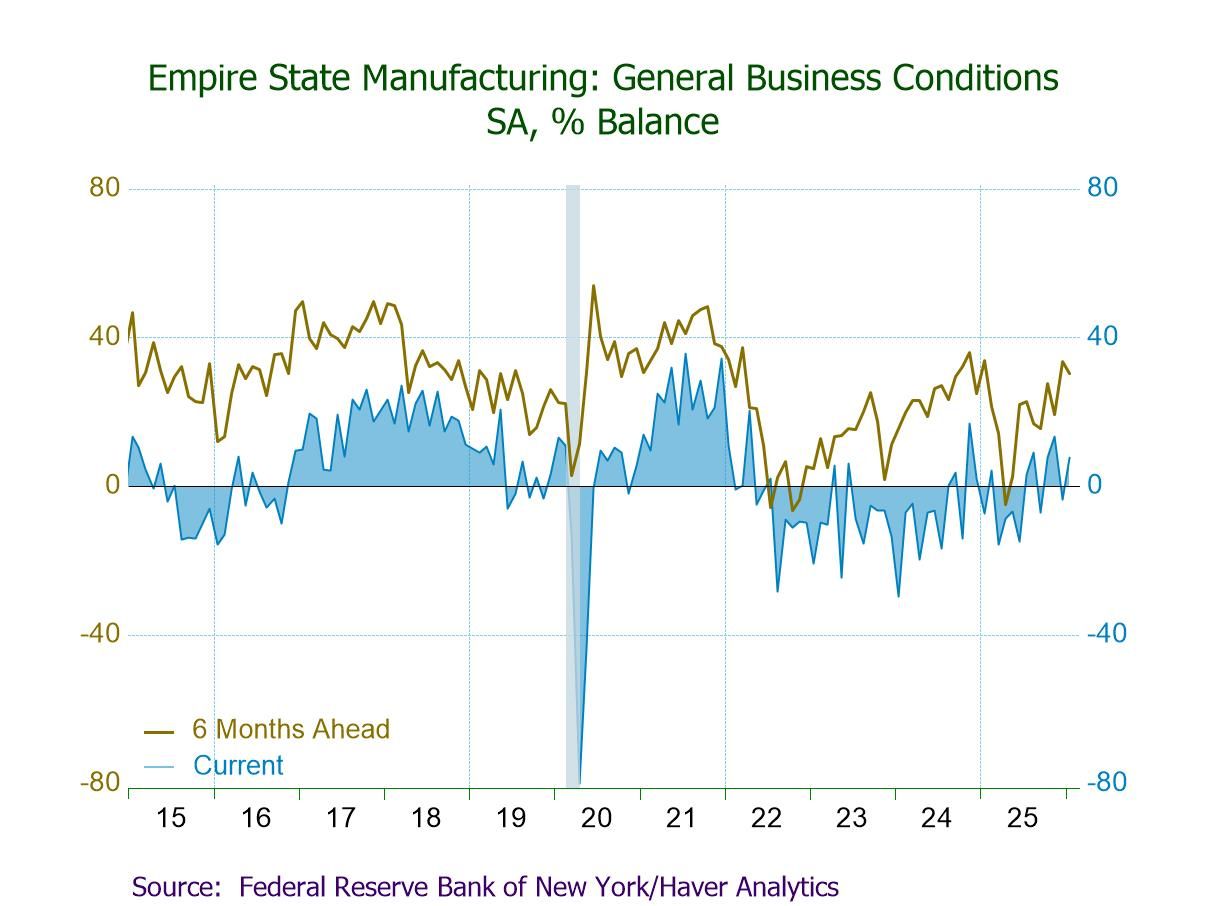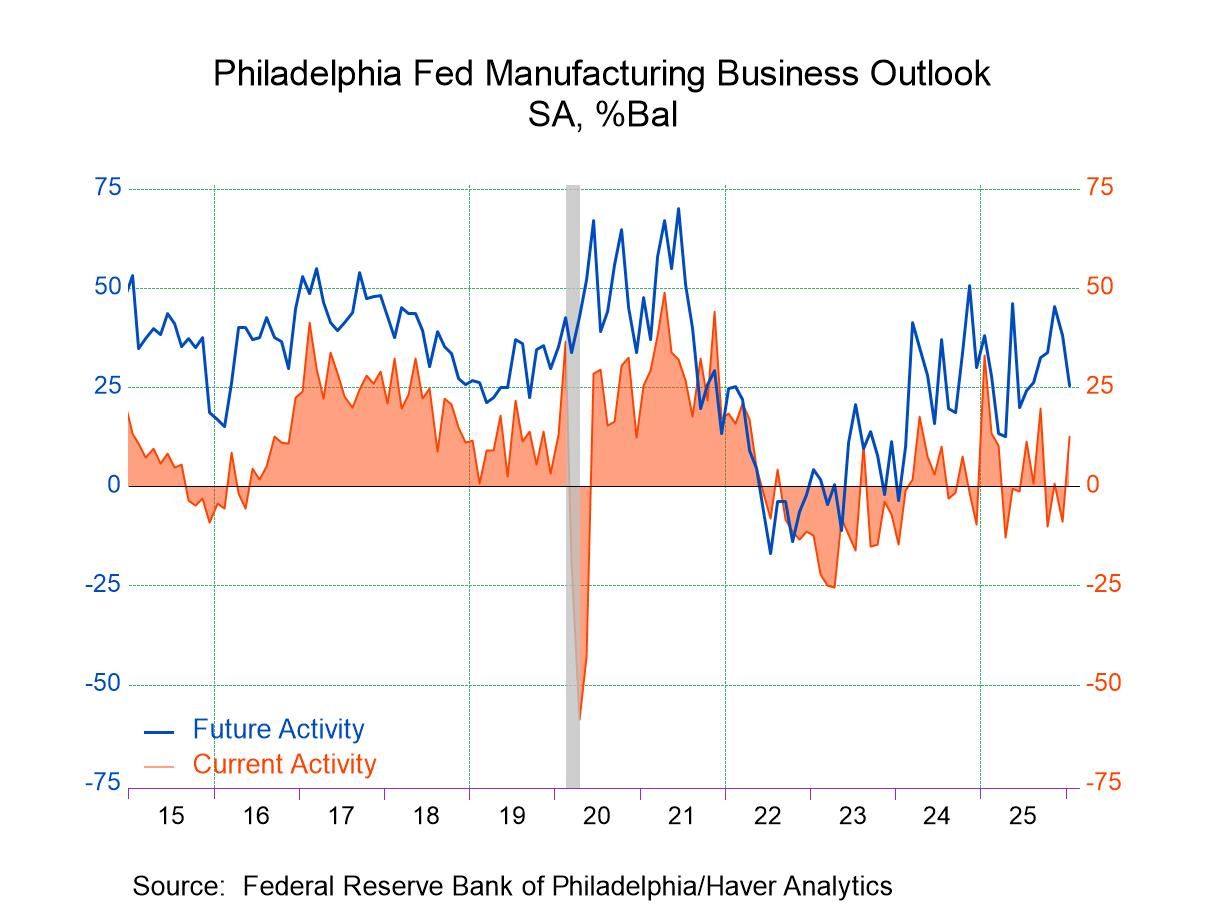U.S. Empire State Manufacturing Index Rebounds to a Positive Reading in September
Summary
- Improvement in business activity in New York State, w/ General Business Conditions Index up 20.9 pts. to 1.9.
- Positive numbers for new orders (5.1) and shipments (12.4), but negative ones for unfilled orders (-5.2), inventories (-6.2) and employment (-2.7).
- Inflation pressures rise, w/ prices paid and prices received up to a four-month high.
- Optimism on the six-month outlook grows, w/ Future Business Conditions Index up to the highest level since March ’22.


The Empire State Manufacturing Index of General Business Conditions increased to 1.9 in September, up from -19.0 in August and 1.1 in July, according to the Empire State Manufacturing Survey released by the Federal Reserve Bank of New York. A reading of -10.0 had been expected in the Action Economics Forecast Survey. The September unexpected positive reading was up from -1.5 in September 2022. The percentage of respondents reporting an increase in business conditions was 26.6% in September, up from 16.1% in August, while the percentage reporting a decrease was 24.8%, down from August's 35.0%. The latest survey was conducted between September 5 and September 12.
The headline index reflects the answer to only one question concerning general business conditions and is not calculated from the components. Haver Analytics constructs an ISM-adjusted series, which is comparable to the ISM manufacturing index. This calculated index rose to a three-month-high 51.1 in September from 45.9 in August; it was up from a low of 43.5 in May but slightly down from 54.5 in September 2022. A level of 50 is the breakeven point between expansion and contraction.
In the latest survey, the new orders index rebounded to 5.1 in September from -19.9 in August; it was the highest level since a high of 25.1 in April and up from 3.7 in September 2022. An increased 32.6% of respondents reported higher orders in September while a lessened 27.5% reported lower orders. The shipments index increased to 12.4 in September after falling to -12.3 in August, but it was down from a high of 23.9 in April and 19.6 in September last year. The latest readings pointed to an increase in orders and shipments.
The unfilled orders index improved to -5.2 in September from -6.8 in August, albeit remaining in a negative territory for the fifth consecutive month and signaling that unfilled orders continued to fall. The index was at the highest level since April’s zero reading and up from -7.5 in September 2022. The inventories index also remained at a negative level, up modestly to -6.2 in September from -9.7 in August, indicating that inventories contracted for the fifth straight month. The index was down from a positive 9.4 in September last year. The delivery times index rose to 2.1 in September from 1.9 August (also 1.9 in September 2022), with 14.4% of respondents reporting higher delivery times and 12.4% of respondents reporting lower delivery times.
Meanwhile, the number of employees index fell to -2.7 in September, the lowest level since June, from -1.4 in August, showing a slight decline in employment levels. The index was down from a high of 14.0 in December and 9.7 in September 2022. A lessened 8.9% of respondents reported increases in employment in September while 11.6% reported lower employment. The average workweek increased to -5.0 in September after falling to -10.7 in August; nevertheless, remaining below a high of 6.9 in November and -0.1 in September last year.
Inflation pressures increased somewhat this month. The prices paid index rose to 25.8 in September, the highest level since May, from 25.2 in August, showing little change in the pace of input price increases. The index was down from 39.6 in September 2022. A 29.9% of respondents reported higher prices paid in September while 4.1% reported lower prices paid. The prices received index rose 7.0 pts. to a four-month-high 19.6 in September from 12.6 in August, indicating a pickup in the pace of selling price increases. The index was down from 23.6 in September last year. An increased 22.7% of respondents reported higher prices received in September while only 3.1% reported lower prices received.
Expectations for the next six months generally improved in September. The index for future business conditions rose to 26.3 in September, the highest level since March 2022, from 19.9 in August, indicating firms were more optimistic about future business conditions. Expectations for new orders (34.8 vs. 28.1) and shipments (33.7 vs. 29.6) increased noticeably in September vs. August, while employment (15.9 vs. 24.9) was still expected to grow. Expected delivery times rose to 4.1 in September, the highest reading since April 2022, from -2.9 in August. Capital spending plans remained somewhat weak, with expectations for capital spending falling to 10.3 in September from 13.6 in August; expected technology spending dropped to a three-month-low 5.2 from 14.6. Expected prices paid eased to 37.1 in September from 37.9 in August, while expected prices received rose to 28.9, the highest level since April, from 18.4.
The New York Fed survey data are contained in Haver’s SURVEYS database. The expectations series is in Haver’s AS1REPNA database.


Winnie Tapasanun
AuthorMore in Author Profile »Winnie Tapasanun has been working for Haver Analytics since 2013. She has 20+ years of working in the financial services industry. As Vice President and Economic Analyst at Globicus International, Inc., a New York-based company specializing in macroeconomics and financial markets, Winnie oversaw the company’s business operations, managed financial and economic data, and wrote daily reports on macroeconomics and financial markets. Prior to working at Globicus, she was Investment Promotion Officer at the New York Office of the Thailand Board of Investment (BOI) where she wrote monthly reports on the U.S. economic outlook, wrote reports on the outlook of key U.S. industries, and assisted investors on doing business and investment in Thailand. Prior to joining the BOI, she was Adjunct Professor teaching International Political Economy/International Relations at the City College of New York. Prior to her teaching experience at the CCNY, Winnie successfully completed internships at the United Nations. Winnie holds an MA Degree from Long Island University, New York. She also did graduate studies at Columbia University in the City of New York and doctoral requirements at the Graduate Center of the City University of New York. Her areas of specialization are international political economy, macroeconomics, financial markets, political economy, international relations, and business development/business strategy. Her regional specialization includes, but not limited to, Southeast Asia and East Asia. Winnie is bilingual in English and Thai with competency in French. She loves to travel (~30 countries) to better understand each country’s unique economy, fascinating culture and people as well as the global economy as a whole.




 Global
Global

